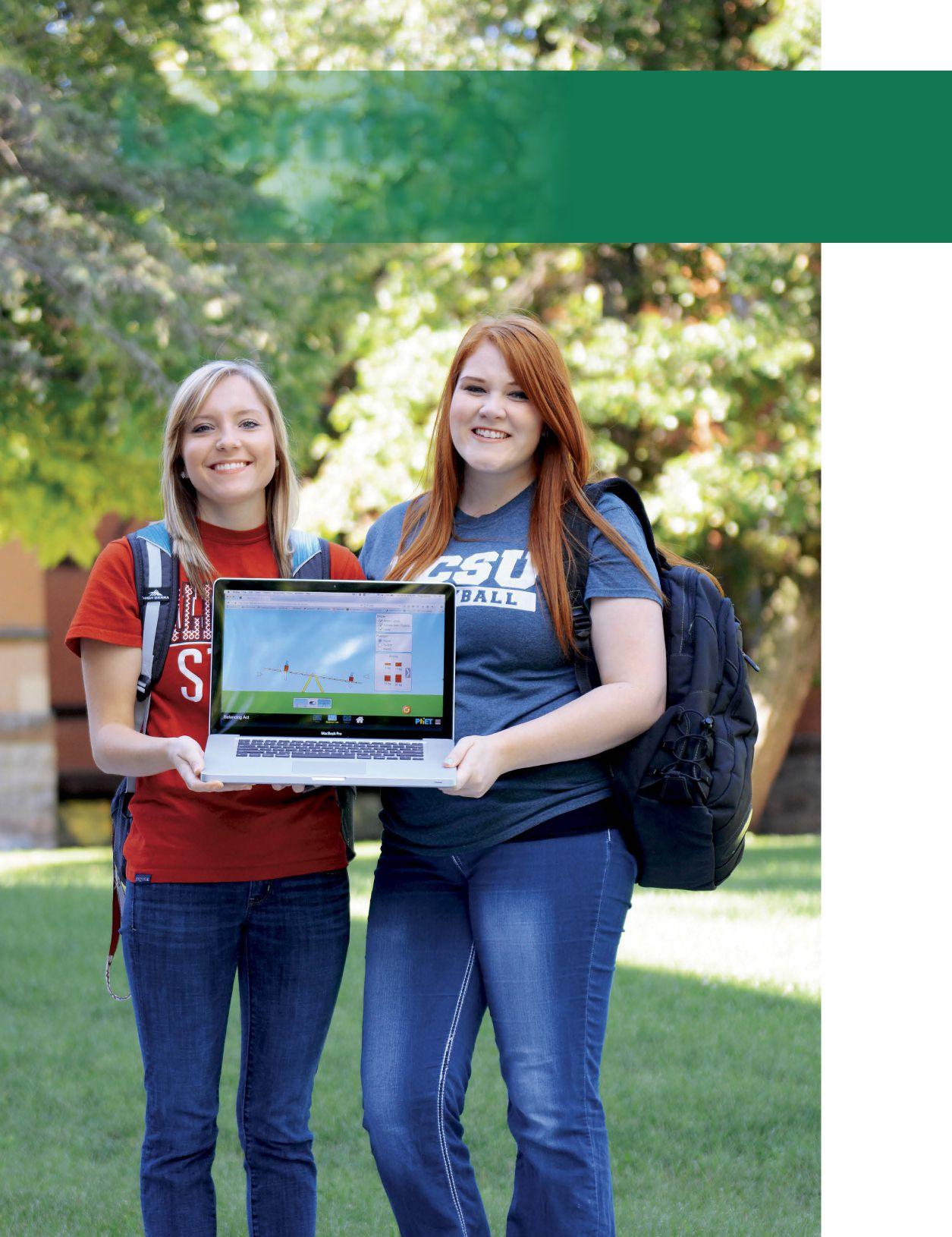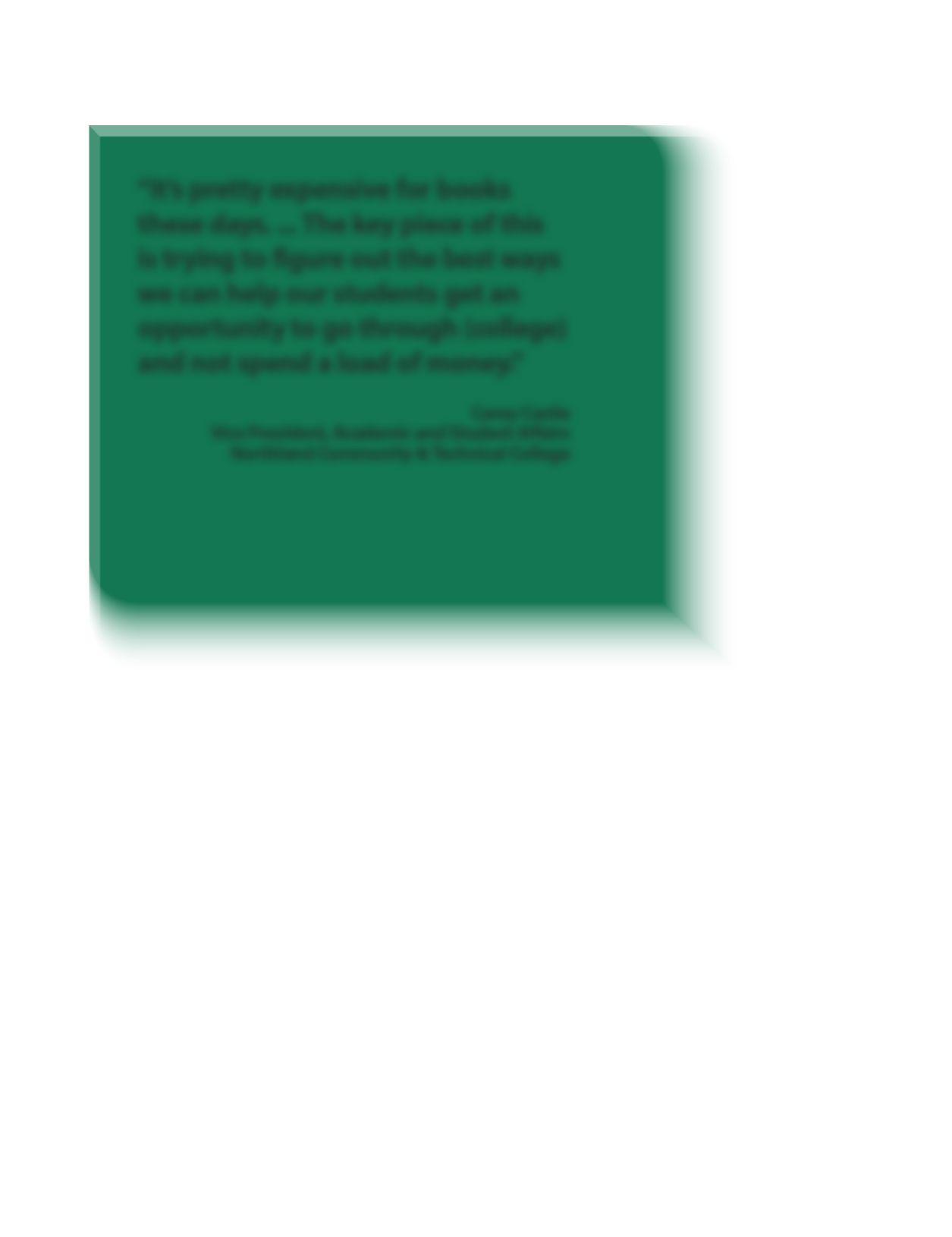
3 minute read
Learning on the Next Level
BY LISA GIBSON
During the spring 2016 semester, Valley City State University students saved an estimated $82,000 through an expansion of the school’s use of open educational resources (OERs) as a substitute for costly textbooks. About 600 students that semester participated in classes using OERs, almost half of the university’s total 1,400 enrollment, says Julee Russell, a VCSU English professor who uses OERs in her courses.
One section of Russell’s Intro to Professional Writing course served as the first guinea pig for OERs during the fall 2015 semester. Seeing significant success, the concept has expanded to all sections of that course, as well as to about 12 more courses, in multiple sections. Another 10 instructors are gearing up to start the 2016 fall semester with the use of OERs in their classrooms. “Ultimately, students really liked having access to the resources right there, online, anytime,” Russell says.
OERs provide vetted course material for students online, eliminating the need for them to spend hundreds, sometimes thousands, of dollars on textbooks that might not ever see use after the course concludes. The OERs are accessible from anywhere with an internet connection, and many are adaptable to mobile devices. The fact that VCSU is a laptop university furthers the already-significant benefits of OERs to its students, Russell says.

College students don’t always understand how much textbook costs can add to their student loan totals, and how much interest they accrue by the time those loans are paid off years later, Russell says. “It sneaks up on students. I think they don’t really realize it. … Maybe if we can get more of these open educational resources involved in their education, they wouldn’t have to pay so long for their education.”
Carey Castle, vice president of academic and student affairs at Northland Community & Technical College, agrees. “It’s pretty expensive for books these days,” he says. NCTC has locations in East Grand Forks and Thief River Falls in Minnesota. “The key piece of this is trying to figure out the best ways we can help our students get an opportunity to go through (college) and not spend a load of money.”
Professors’ Perspectives
NCTC has a few classes that utilize OERs through a portal called Creative Commons, which VCSU also uses. “It’s still relatively new to us,” Carey says of OERs. “Not in concept, but in application.”
The main barrier to widespread implementation is the cost to switch over, which includes compensating instructors and professors for extra time putting together course materials and curriculums, he says. The materials can come from a variety of different repositories, so instructors can gather the best ones for a perfectly designed curriculum for each particular course. That’s a benefit, Russell says, but also eats up valuable time. “It’s much easier to go to a textbook publisher site, choose a textbook and order it,” she says.
VCSU received a $10,000 grant from the North Dakota University System to support professors and instructors in exploration and implementation of these resources, Russell says. Without that, as well as moral support from administration, VCSU would not have been able to make the progress with OERs that it has, she says. “Faculty members need support in this shift.”
Castle agrees, saying instructors do all the work in transitioning to OERs. “It becomes a pretty complex issue,” he says. Distance Minnesota, an online course consortium made up of NCTC, Northwest Technical College in Bemidji and Alexandria Technical & Community College, received almost $300,000 to help in the conversion. The funds came from Achieving the Dream — a national organization that helps grant access to education for all students — and is timely and helpful, Castle says. It will be used to overhaul 54 online courses within three programs: an Associate of Arts, health sciences broad field and child development.
‘Another Learning Method’
At South Dakota State University in Brookings, Becky Jensen uses an etext concept for her community nutrition class. The service isn’t free, but represents a $60 savings on textbooks per student, she says. Jensen is an instructor within SDSU’s
Department of Health and Nutritional Sciences and program director of the nutrition and dietetics internship.
Students love the accessibility of the etexts, and the added interactive element brought into the course through additional activities and case studies incorporated into the etext curriculum Jensen has chosen.

“It adds another learning method for my students so that they can get beyond the classroom and get immediate feedback.”
Similar to Creative Commons, Jensen can customize the etexts for her course, adding links and notes into the reading material for her students, and she benefits from the program’s existing questions and activities. “I can spend my time making the classroom more engaging for students instead of coming up with questions.”
Because of those and many other benefits, online resources have been increasing in use but mostly in pockets, Castle says, with no widespread implementation across all universities and colleges. It’s not applicable to all classes, he adds. Russell agrees, but says general education courses are ideal for it.
“Some courses lend themselves to doing an OER concept, some of them not so much,” Castle says. “I think, in the long run, this is going to be, for the majority of students, a good option.” PB
Lisa Gibson Editor, Prairie Business 701.787.6753











